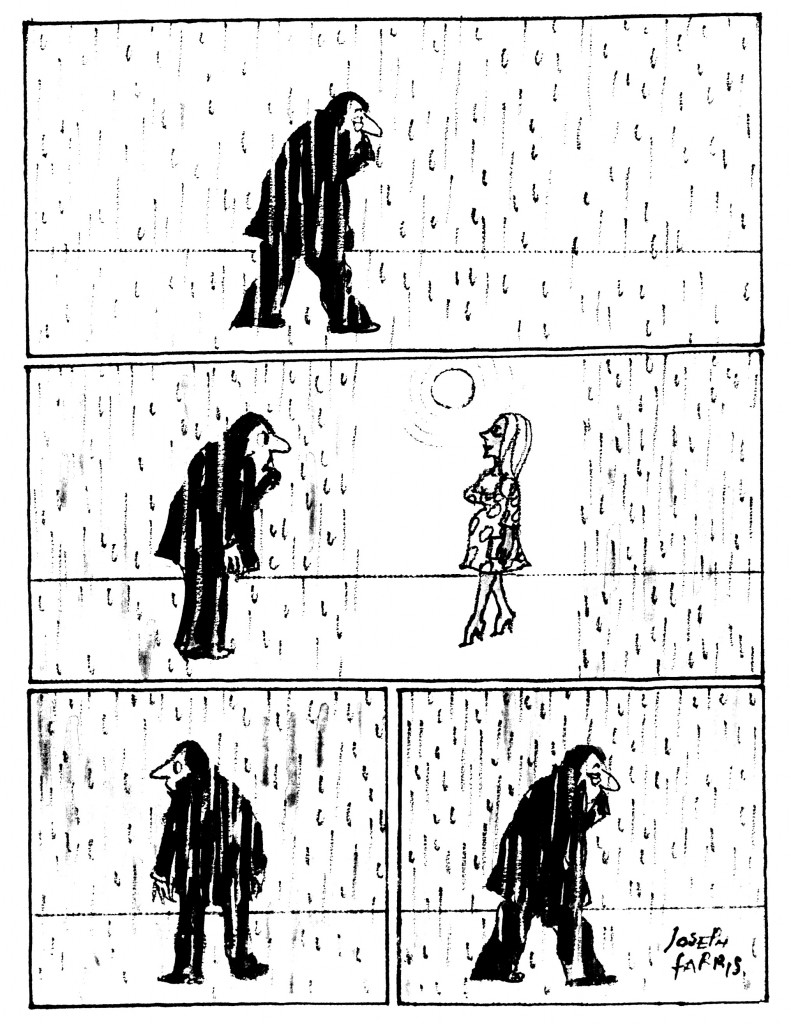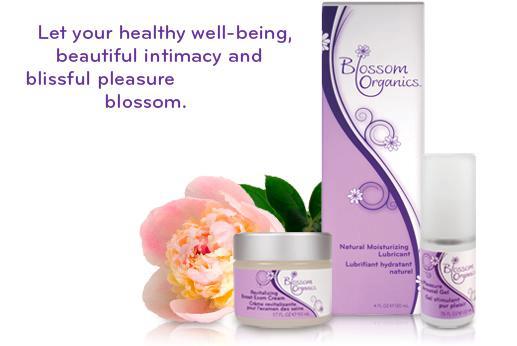Wednesday Bubble: How Dry Am I? How Dry Are You?
Puzzle me this:
What do vaginal dryness and technology have in common?
Evidently, the folks at RuJuVey want your help in finding out. But first, let’s talk about the issue of vaginal dryness. Vaginal dryness is a characteristic of vaginal atrophy — a thinning of the vaginal tissue that results as estrogen declines. It affects as many as half of all women as they go through menopause and although vaginal atrophy can occur during anytime in a woman’s life, it’s prevalence does increase with aging. And so do the accompanying symptoms of dryness, pain during intercourse, irritation, post-intercourse bleeding and of course, a decline in sexual desire and functioning as a result. While topical estrogen is certainly an option and prescribed by many clinicians for this problem, it’s always nice to have non-prescription alternatives that work just as well.
That’s where RuJuVey theoretically enters the picture.
Admittedly, I don’t know very much about RuJuVey; from what I understand, the company is working on a device that uses sonic technology to deliver a non-hormone emollient. And, while the product is in development, they are seeking your assistance, via a short, online survey, to try to learn more about vaginal dryness and the percentage of women who suffer from it as a result of aging. In addition to participating in the survey, you may also be considered for participation in a test group.
Mind you, I’m curious about the device, although I’m not quite sure that I can get my ‘legs’ around (!) what I assume will be a tampon-like device that requires insertion to help turn on the juices again. Then again, that’s simply an assumption.
If you are interested, I’d encourage you to click on the link above and take the survey. I did and it’s a painless way to participate in innovation. And when it comes to menopause, I’m all about innovating.
Who knows? It might be the sunny side of Menopause Lane!
[Disclosure: While I was approached by ReJuVey to share their survey, they did not contribute ideas for this post nor was I paid by the company.]
Read MoreWednesday Bubble: Lub(e)-a dub dub
Vaginal atrophy — thinning and drying of the vaginal tissues as a result of declining estrogen levels– leads to itching, burning, dryness, irritation and pain. And while it certainly isn’t the silent scourge overtaking women globally, it does affect roughly 50% of menopausal women and often goes unrecognized and undiagnosed. More importantly, unlike hot flashes and night sweats, vaginal atrophy does not go away; rather, in some women, may may progress to cause years of discomfort, so much so that quality of life is significantly impacted. Indeed, data suggest that the proportion of women experiencing vaginal dryness increases five-fold as women advance through menopause.
Importantly, results of a recent global survey indicate that most women choose over-the-counter lubricants and are not even aware that a low-dose, relatively safe topical estrogen treatment is available. Still, for many, over-the-counter options are enough, such as Replens, which theoretically goes beyond instant relief and actually provides ongoing protection. However, what should you do if sexual intimacy continues to be uncomfortable, your vagina feels increasingly uncomfortable and hormones are an undesirable choice?
Isoflavones baby!
Yup, soon, you may be able to leave the over the counter and hormone therapy options behind for a safer, effective treatment. Reporting in the online version of Maturitas, researchers state that they have been exploring plant-like estrogens in a topical gel format can deliver benefits similar to topical estrogen gel without p0tential safety issues. And, when they blindly compared 12 weeks of a 1 gm isoflavone gel to topical Premarin or placebo gel in 90 menopausal women, that’s exactly what they found!
At the beginning of the study, 100% of women reported vaginal dryness and pain, 82% said that they had itching and 72% complained of vaginal discharge. In women receiving the isoflavone gel, as many as 70% reported that their dryness was intense and 60% said that their pain was intense. By the end of 12 weeks, improvements were seen in both vaginal dryness and vaginal pain; no women reported having intense symptoms and roughly half said that their symptoms were mild. Overall, roughly 97% of women using isoflavone gel saw improvements in both vaginal dryness and pain. Similar figures were observed in women using topical estrogen.
Now here’s the science geeky part. When the researchers took a closer look at the cells in the vaginal wall, they noted a shift towards values that one would see in a premenopausal woman. And, whereas topical vaginal hormone therapy sometimes results in vaginal bleeding and thickening of the lining of the uterus, these issues were not seen in women using the isoflavone gel (neither were they noted in women using topical estrogen, probably due to the extremely low dosage).
The researchers say that it appears that the isoflavone gel can be used safely without any risk of systemic absorption. Now? We need more studies so we can get this gel to market.
Read More
Blossom into…pleasure
Freud started it; the driving force that makes us fulfill our most primitive urges, the pleasure principle. I’d like to think of it in a more positive light and I’m happy to say that the new line of intimate care products by Blossom Organics has my attention in the most wonderful way possible.
As we age and estrogen starts to wane, certain challenges may arise in our private areas, challenges like thinning vaginal tissue and lubrication issues. And although many things undoubtedly factor into and drive sexual desire, things like intimacy, our surroundings, daily stressors, our partners, our sense of purpose, vaginal dryness is real and for some women, may call for a little help. Mind you, I still don’t ascribe to the ‘silent suffering’ message that arose late 2010 when the International Menopause Society teamed up with Novo Nordisk to promote hormone therapy. But I do believe that knowing one’s options is critical to overall wellbeing and sexual health. Consequently, when the CEO of Blossom Organics wrote to ask me if I’d like to try their products, I thought to myself, ‘sure, why not?”
As I’ve gotten older, I’m finding that I am less inclined to use skincare and other products that are formulated with harsh chemicals. I’ve always had sensitive skin but as my hormones have changed, so have my skin tone, texture and reactions. Consequently, although I love trying new things, I typically end up with the old, especially when it comes to my more intimate areas. And while the organic label doesn’t always mean “better,” it often causes me to read the label to see exactly what that means.
In the case of Blossom Organics, it means intimacy without chemicals that may screw with your skin’s pH or cause other unpleasant reactions, chemicals such as parabens, artificial dyes, flavorings or fragrances. This doesn’t mean, however, that the products are entirely scent-free. In fact, I found the Revitalizing Breast Exam Cream, which contains coconut and almond milks and cocoa, reminded me of a something from my childhood that I just can’t put my finger on, an odor that doesn’t appeal in the least. And the Warm Sensation Moisturizing Lubricant appears to rely on organic peppermint, at least in part, to provide the warming sensation, a substance that might not please everyone’s palate. Still, I think that the line is diverse enough to offer something for everyone. If the warm moisturizing lubricant or Warm Sensation Oil isn’t your thing, there’s an alternative: the Natural Moisturizing Lubricant is relatively odorless and gentle enough for everyday dryness and not just the dryness that occurs during intimacy.
The one are where Blossom Organics appears to have taken the wrong turn is with their Pure Pleasure Arousal Gel, which the product insert claims “will exhilarate your senses and heighten your sexual pleasure.” Let’s get this straight: burning does not equate to ectasy. I have the same issue with Blossom’s arousal gel as I did with Zestra; a hunka hunka burning love makes me want to run screaming in the other direction. That said, however, Blossom Organics’ product still wins in the scent department in comparison to this particular competitor.
Overall, I give Blossom Organics a 4.5 out of 5 for variety, ingredients, pH balance, packaging and appeal. Moreover, their price point is reasonable, depending on which product you choose (a quick search on Drugstore.com yielded a range of $10 to $40). Most are safe for use with latex as well, which bodes well for solo pleasure and condoms.
Next time you feel the need, you may want to take your pleasure the Blossom route. It’s nice to see a dedication to female-friendly and attention to pH and truly natural.
[Disclaimer: I was not offered nor did I accept compensation for this review. However, the company did provide me with product samples for my personal use.]
Read More
Wednesday Bubble: Warn me
This week’s Bubble is straight out of the buyer beware files. Introducing Warmi ‘Better Menopause Relief.’
Warmi, according to the manufacturer website, is “a unique vegetable and fruit extract supplement. It contains 85% organic ingredients in a vegetable capsule and is 100% Vegetarian.” Moreover, Warmi provides safe, natural, full spectrum menopause relief” meaning that in a single study of 122 women, Warmi “also enhanced hormonal balance, mood, cardiovascular and bone health, vaginal dryness and intercourse discomfort — even overall quality of life. Many benefits were noted in just 30 days.”
Evidently, Warmi delivers, all that and more.
How, you ask?
Warmi’s active ingredients are:
- Gluocosinates, plant chemicals that are found in cruciferous vegetables such as cabbage, which are believed to help fight cancer and possibly, promote heart health.
- Beta-sitosterol, a substance found in plants and suggested to have properties similar to cholesterol. It is used in some European countries for benign prostatic hyperplasia (enlarged prostate) and according to the Warmi website, has been shown in laboratory animals to have some sort of weak estrogen effect that “may benefit the reproductive system.”
- Hesperidin, a flavonoid found in citrus fruits which has shown promise in laboratory animals to potentially reduce blood pressure and cholesterol and work as an anti inflammatory and produce pain killing effects. The Warmi website says that it may also ‘help bone metabolism.’ Note that this claim is based on one study done in mice, which demonstrated a decline in the loss of bone density.
So, Warmi is made up of cancer and heart protective ingredients, may alleviate pain, and…helps with menopausal symptoms? But how does it work? In the FAQ section of the product website, it says that while “The exact mechanism of Warmi is not fully understood but is believed to be associated with certain estrogen receptors.”
I’m sorry…WHAT?!
All I can think of when I think ‘Warmi’ is “warn me.” Yes, warn me that medical and scientific claims without substantiation are to be questioned, that comparisons to existing alternative strategies are difficult without well-designed research, and that unpublished, unreviewed product data are just that: unpublished, unreviewed and non-vetted.
Forewarned is forearmed.
Enough said.
Read More
Soy! Everything you wanted to know. Or should.
 Confusion about soy abounds. Does it help hot flashes, improve bone health or prevent heart disease by lowering cholesterol? Or it is no more effective than placebo? Does its effectiveness rely upon the ratio of certain isoflavones — the plant-based estrogen-like components, which in soy include genistein (50-55% of total isoflavone content of soy), daidzein (40% to 45% of total isoflavone content) and glyceitein (5% to 10% of total isoflavone content) — or is the metabolite S-equol the only component that will yield estrogen-like benefits without negative health risks?
Confusion about soy abounds. Does it help hot flashes, improve bone health or prevent heart disease by lowering cholesterol? Or it is no more effective than placebo? Does its effectiveness rely upon the ratio of certain isoflavones — the plant-based estrogen-like components, which in soy include genistein (50-55% of total isoflavone content of soy), daidzein (40% to 45% of total isoflavone content) and glyceitein (5% to 10% of total isoflavone content) — or is the metabolite S-equol the only component that will yield estrogen-like benefits without negative health risks?
Are you perplexed? I sure am, which is why this particular post may be a bit to scientific for a few and too long for others. however, it’s important to understand some of the reasons why soy continues to intrigue, baffle and well, show differing results in terms of benefits for menopausal symptoms. So I encourage you to bear with me.
I’ve written previously that there are several key reasons why researchers have yet to make any any definitive conclusions about soy during menopause, such as poorly designed studies, small number of study participants, wide range of ages and years from menopause, and the fact that the pros and cons of an agent or strategy are not being studied for a long enough period of time. In other cases, there is an inconsistency in the soy preparation being studied and the ratio of isoflavones may differ; alternatively, researchers have not accounted for the presence of other isoflavones in the diet, which may influence results.
Does a new study that appears in the advanced online edition of Maturitas journal, comparing low-dose hormone therapy to soy powder in women with hot flashes, offer any anything more definitive or different than what’s gone before?
Briefly:
The 16-week study enrolled 60 women between the ages of 40 and 60, all of whom had had their last period at least 12 months, had the same frequency of hot flashes (more than 8 per 24 hours), had not used any hormonal treatment in the 6 months leading up to the study period, and were not currently using any drugs that lower blood fats, treat diabetes, taking other soy-based products or using herbal supplements.
Women participating in the study were randomly assigned:
- low-dose hormone therapy (a Activelle ®tablet daily, better known as Activella® in the US) plus a placebo powder or
- 2 portions daily of dietary soy supplementation powder (comprising 45 mg isoflavone per dose) plus a placebo tablet, or
- 1 placebo tablet/2 portions placebo powder.
All women were first screened for current hormone levels, reproductive history, age at menopause, time since menopause, medication use and cigarette/alcohol consumption. During the study, they were asked to use a standardized scale to evaluate menopausal symptoms (hot flashes, heart discomfort, sleep, and muscle and joint problems) mood (depression, irritability, anxiety, physical/mental exhaustion) and sexual problems, bladder problems and vaginal dryness.
The results?
Both hormone therapy and soy supplementation were associated with significant improvements in hot flashes and joint/muscle pain (which declined by about 45.6% in the hormone group and 49.8% in the soy group) and in vaginal dryness (which decline d by 38.6% in the hormone group and 31.2% in the soy group) compared to women who took placebo. Improvements in mood scores were consistent between the three groups, indicating that other factors, such as caring and attention by medical practitioners throughout the study, may have played some role in wellbeing. Moreover, both treatments were considered safe with few side effects.
These results are quite promising, as they indicate that soy may indeed, offer an alternative to hormone therapy in menopausal women seeking relief. However, it’s important to consider the following:
- Like many of its predecessors, the study is a small one.
- The study length was short, lasting only 16 weeks, which some critics might say is too short a time period to elicit a satisfactory clinical response.
- The researchers did not analyze whether or not the women actually took the drugs or soy consistently, and relied on their self-reports.
On the other hand:
- The study followed strict Western scientific guidelines and the women and the researchers did not know who was taking what.
- Symptoms were measured using a common quality of life scale whose goal it is to diminish errors by healthcare practitioners when analyzing results of questionnaires. This particular scale, better known as the MRS, is widely used and allows researchers to evaluate symptoms and treatment over time.
There has been a lot of criticism geared towards alternative treatments, such as acupuncture, herbs and Chinese medicine, as being shams, especially because there is no evidence supporting their use for addressing troublesome menopausal symptoms. Others will claim that the placebo effect is at play, i.e. a situation in which symptoms are relieved by an otherwise ineffective treatment due to expectations or beliefs. However, the researchers of this particular study point to the placebo effect in studies comparing estrogen to placebo, demonstrating for example, a 75% reduction in hot flashes among hormone users compared to a 57% reduction in hot flashes among women taking placebo.
The most important conclusion to be drawn is that there is early evidence that soy supplementation may be as effective as low-dose hormonal therapy in relieving certain vasomotor symptoms and possibly, vaginal dryness. We need more studies like this one, enrolling larger numbers of women, in order to definitively demonstrate benefit. Dollar for dollar, the monthly difference between the two treatments may only be about $30. Yet, this is one of the first studies I’ve seen that followed enough rules to quiet the rioters. And that alone, is worth the price of admission.
Stay tuned. The fat lady hasn’t sung her soy aria as of yet.
[Special thanks to Reuters Health Executive Editor Ivan Oransky, for your continued support of my mission to provide timely, evidence-based information on menopause and midlife to my readers.]
Read More









